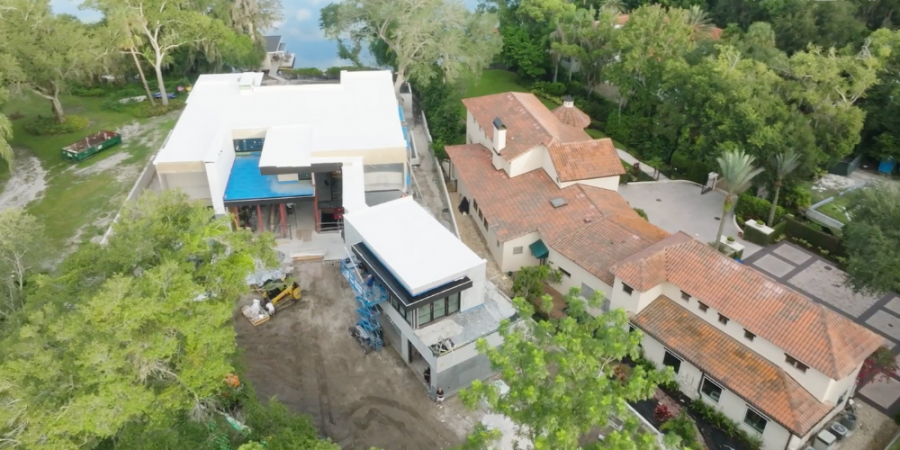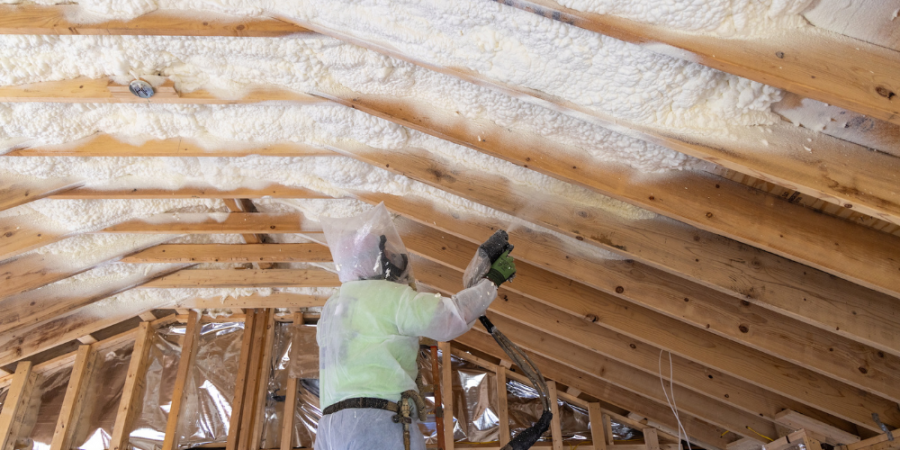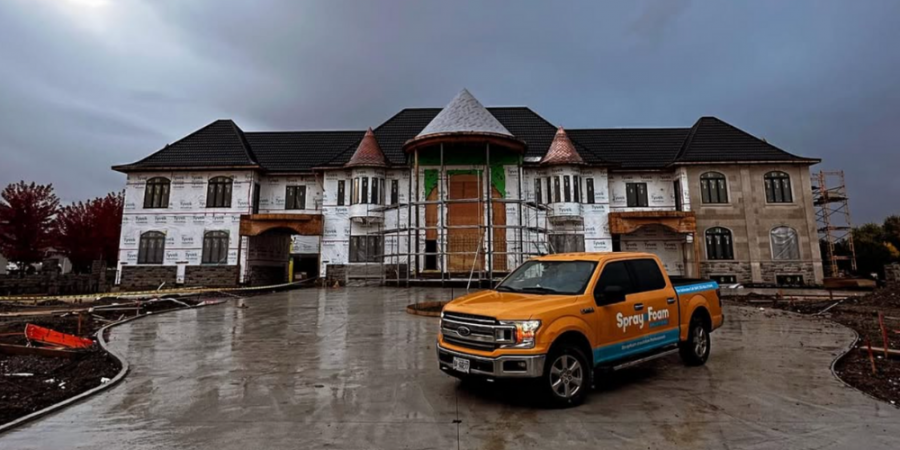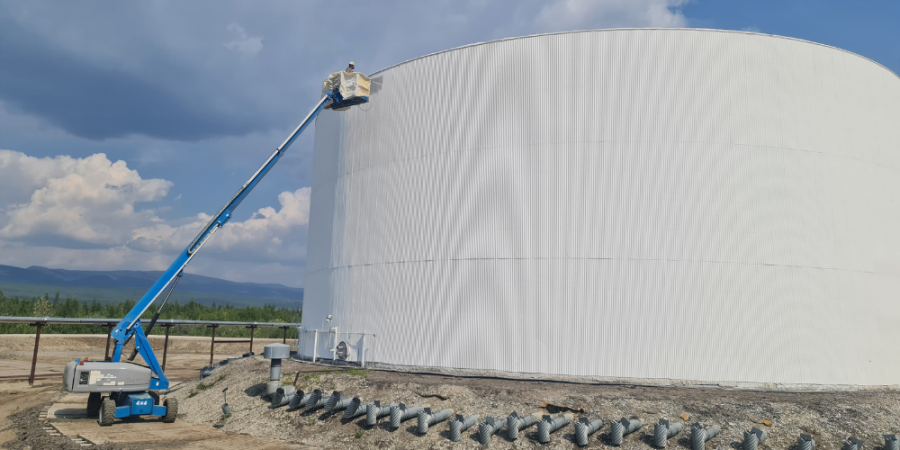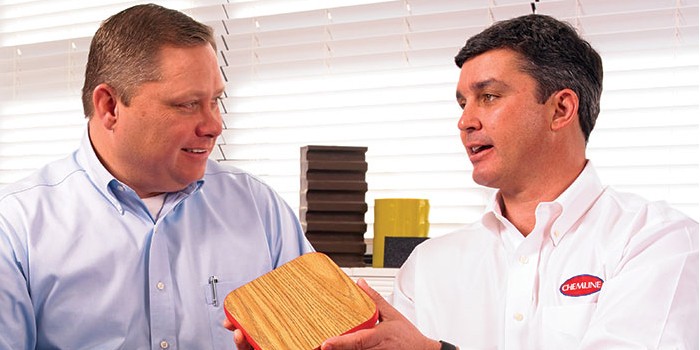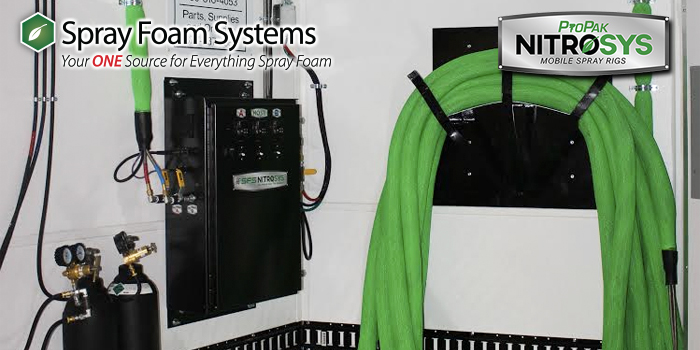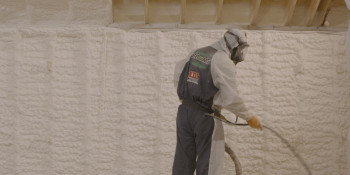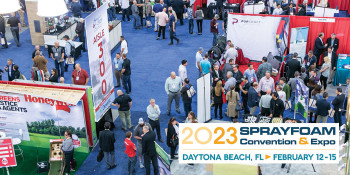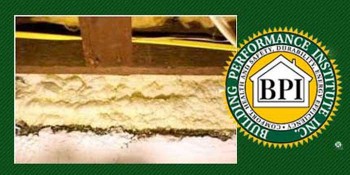Yo-Ho-Ho & Some Closed-Cell Foam
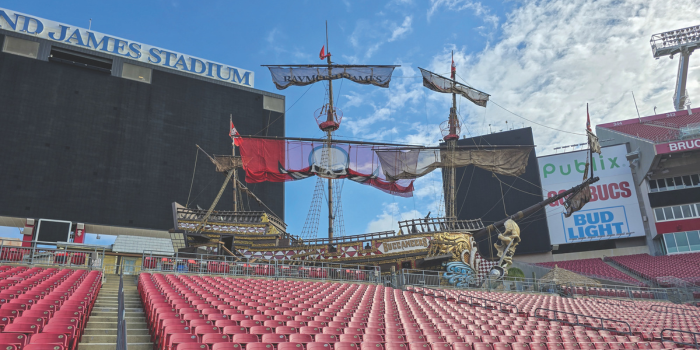

Spray Foam Magazine – Summer 2025 – Buccaneer’s Cove is a tiny replica pirate village situated on the north end-zone of Tampa Bay’s Raymond James stadium, known by fans and locals as simply The Bucs Stadium. Its crown jewel is an elaborate 100-ft-long pirate ship, an iconic set piece beloved by football fans for nearly 20 years. Although the ship’s decks are standing-room only, it’s widely considered the best “seat” in the house. Visitors who board the ship to take in the stadium’s view will find themselves front-and-center to experience the cannon’s victory blasts after every touchdown and triumph.
To keep up the swashbuckling energy each football season, a lot of money and labor goes into maintaining the ship. The latest upgrade includes a two inch layer of Quadrant’s EnviroSeal CC Max Platinum closed-cell spray foam on the interior walls below deck, installed by St. Petersburg’s own Royal Insulation.
Seeing Aye-to-Aye: Getting the Gig
Royal Insulation’s Vice President Phillip Cannon explained that the reasoning behind adding foam has more to do with strength and longevity than typical insulation purposes:
“The foam adds structural stability. It’s really for racking purposes,” said Cannon. “The stadium has a lot of visitors at each event—around 63,000— and many will visit and walk on the iconic ship.”
The Royal Insulation team services the Tampa Bay area and caught wind of the opportunity through their professional network. Another local construction company, B Creative Contractors, reached out to Cannon and President Harley Flores about taking the job. There were just a few caveats—the ship had to be TV-ready in a matter of days, so the general contractors needed the foam installed at breakneck speed, with no margin for error or delays. Time crunch aside, it was an easy “yes” for Cannon and Flores, since they knew their team could more than handle it.
Buccaneer and Far: Arriving On-Site
On an early April morning, Cannon & Flores set sail to the stadium along with their lead sprayer, Trevor Holicky, and Cannon’s teenaged son, Kayden—“a future spray tech” who served as their de-facto photographer that day.
With their smallest rig in tow, they carefully navigated through the labyrinth of private-access alleys and parking garage corridors surrounding the stadium. At first, they were unsure how close they’d be able to park to the ship, but were pleasantly surprised to find they could drive straight into Buccaneer’s Cove and back the rig up beside the ship.
“The most challenging part was trying to pull our truck and trailer through that little roundabout,” Cannon laughed.
Once they parked the truck and got their equipment situated, it was smooth sailing from there—but first, a quick tour of the facilities was in order.
X Marks the Spot: Why Foam is a Good Fit
The outside of the ship is a sight to be seen; red, white, and gold paint adorns the sides, and the front features a massive skull, cutlass, and football sculpture made out of foam and fiberglass. Multiple cannons decorate the exterior, but they're not just for show—they’re concussion cannons that produce smoke and thunderous sound when fired, and several are t-shirt or confetti cannons for launching soft projectiles into the crowd. The cannons are famous for sending loud shockwaves through the stadium every time the Bucs or home team scores, and even blast a warning shot if the opponents enter the red zone.
The average stadium visitor might never see the SPF below deck, but it had an important job to do nonetheless. Repeated booming cannon blasts, heavy foot traffic, jubilant celebrations, and exposure to wind and humidity can all do a number on the ship’s structural integrity over time. The foam helps to absorb shock and increase racking resistance and also serves as a moisture barrier to protect the wood from the sticky Florida climate.
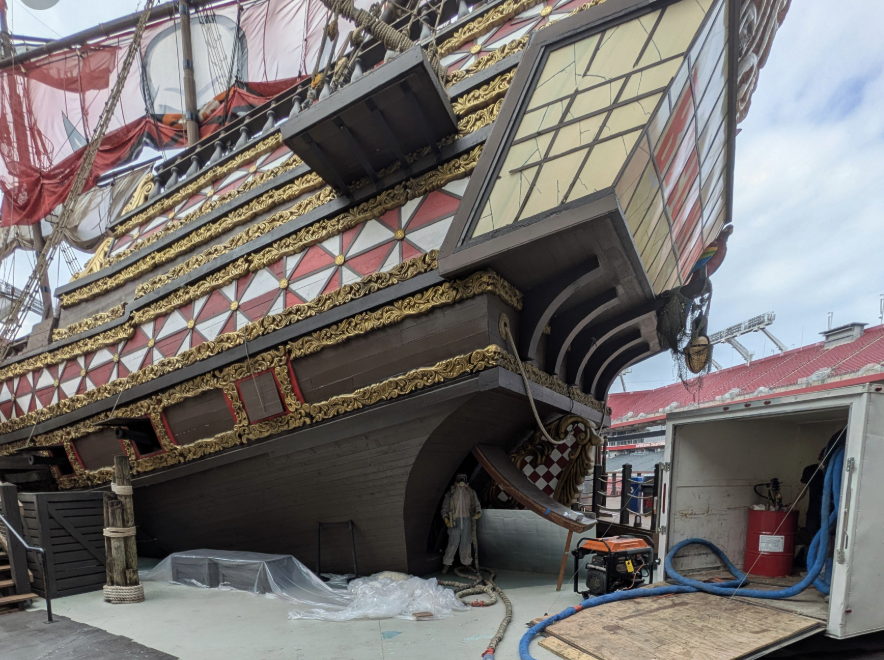
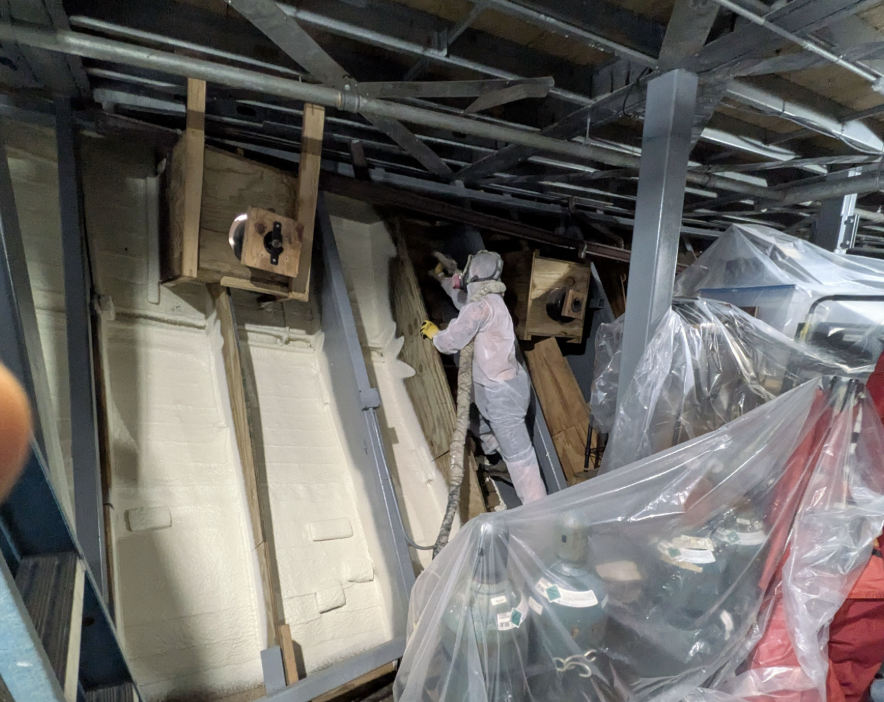
The team could pull up and park right beside theship in Buccaneer’s Cove.Once the equipmentwas ready, lead sprayer Trevor Holicky beginsinstalling a 2-inch layer of closed-cell foam to thewooden interior walls.
Foaming the Planks: The Process
A secret access door on the side of the ship allowed for easy access to the area where they’d be working. The ship is composed of a metal frame and wooden walls made of tongue and groove planking down the length of its 100-foot hull. The team expected to be spraying in close quarters, but Cannon noted the work area was roomier than anticipated.
“It didn’t feel cramped at all. The ceilings were tall– about 12 feet high– and walls were pretty wide– about 20 feet,” Cannon said. “There was plenty of space to work and move around.”
To prep the area, they began filling all small cracks, gaps, and holes with PolySeal canned foam, paying extra attention to seal around door and window frames. This was to prevent any of the closed-cell foam from penetrating the walls and getting overspray on any of the expensive outdoor fixtures. They also added plastic masking to protect the ship’s internal components from overspray, such as the CO2 cartridges used for the cannons.
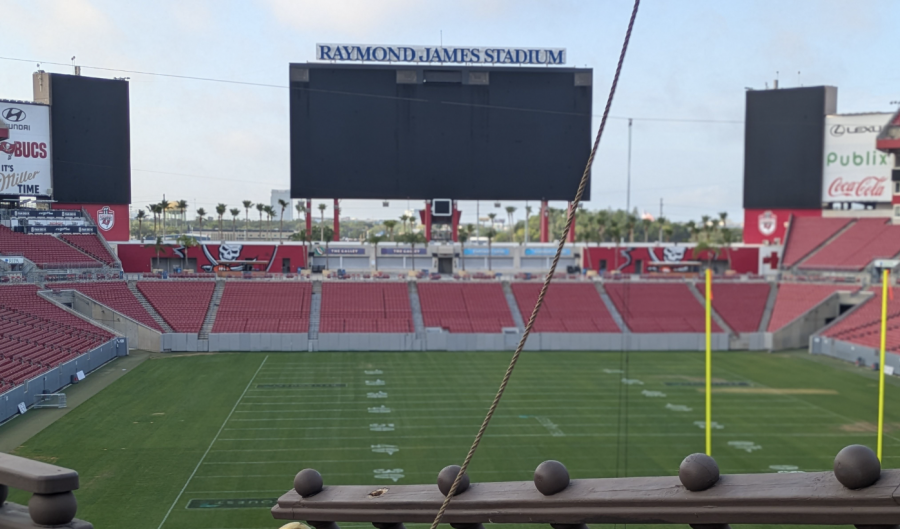
Lead sprayer Holicky suited up in disposable coveralls, a 3M full-face respirator mask and protective gloves. He installed a two-inch layer of EnviroSeal CC Max Platinum closed-cell foam, working the foam up and down each section of wooden planking. Despite the novelty of the work site, the job was pretty standard, and as promised, they finished up in record time.
The Royal Insulation team was thrilled to have left their mark on such a significant piece of Tampa Bay culture. The ship has been a prominent part of the stadium for nearly 20 years, and the freshly installed foam is expected to add years to its structural lifespan. While the foam might never be visible on the stadium’s jumbotrons, it’ll be working overtime below deck to fortify the ship against concussive cannon blasts, elated crowds jumping up and down, and the unpredictable Florida climate.
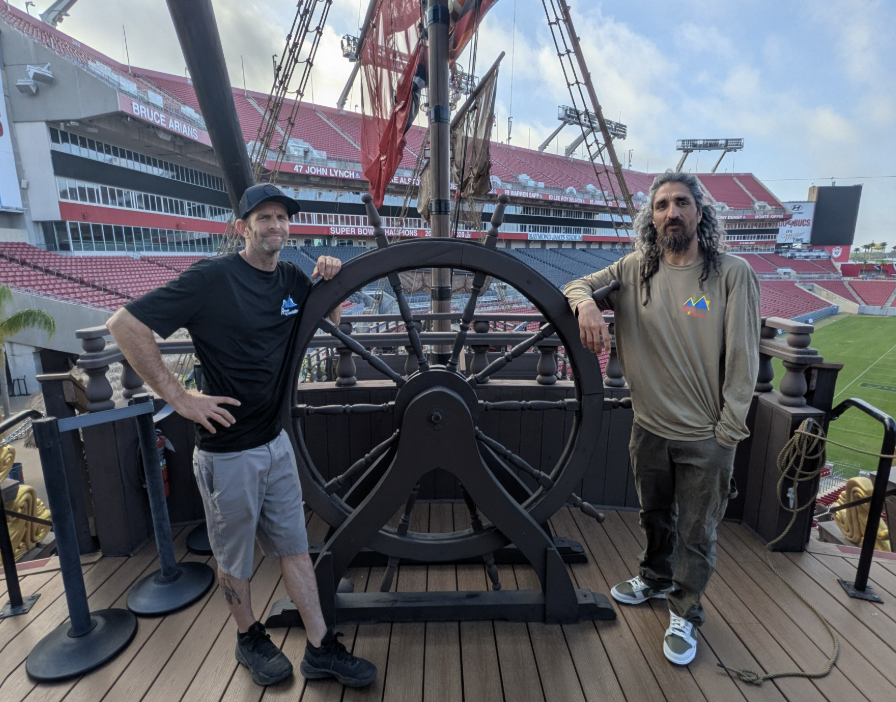
Royal Insulation’s Vice President Phillip Cannon (left) and President Harley Flores (right) pose at the helm.
Disqus website name not provided.





